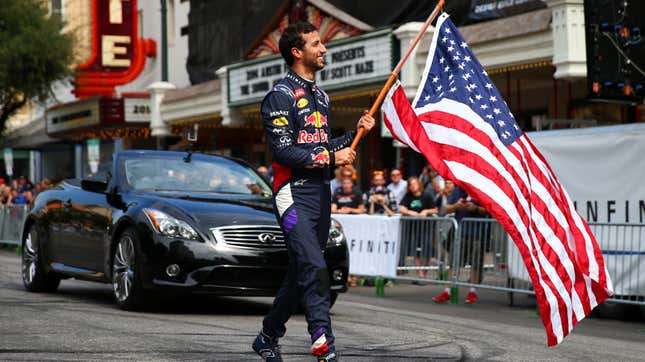
Since the arrival of Netflix docuseries Drive to Survive, Formula 1 has hailed the arrival of new fans around the globe, but perhaps most crucially, it finally claims to have cracked into the American market in a big way. Now, it looks like ESPN viewership numbers are rising — but not by a whole lot.
These observations come from my good pal Ric, whose recent Substack story “F1 TV ratings grow by 0.11 with ‘DTS’” uses publicly available data to track F1's growth in popularity, inspired both by F1's claims and by the layperson’s experience — basically, we’re seeing a lot more mainstream coverage of F1 than we have before.
As Ric notes, the growth of F1 has also coincided with a big shift in the presentation of the sport here in America:
DTS did not happen in a vacuum, though. F1 switched its cable rights from NBCSN and CNBC to ESPN and ESPN2 for 2018. Spanish-language coverage on over-the-air channels UniMás and Univision—that once drew more average viewers than the same live coverage on NBCSN despite being in 30 million fewer households—transitioned to little-carried cable channels under the same corporate umbrella, then pivoted to ESPN Deportes in 2020. The modal race start time moved from 8:00 AM Eastern to 9:00.
Simultaneously, a pandemic rocked the 2020 schedule. Viewers gained the alternative of subscribing to F1 TV and bypassing the ESPN telecast.
Ric, a formidable legend when it comes to data analysis, goes on to create a statistical model to measure the so-called “DTS effect” on American audiences. It factors in 153 Grands Prix from 2013 to present, noting which channels carried the race broadcast and also while excluding events that were severely impacted by weather or pushed last-minute to a different channel. The model also factors in start times on the East coast of America. This allows Ric to compare post-DTS races with pre-DTS races to see if there’s been a significant change in the sport.
And from his calculations, there has been. Drive to Survive increased viewership by approximately 0.11. Or, as Ric puts it: “Restated, if two races aired under the exact same set of circumstances, except that one was in a hypothetical universe without DTS and one was any time after the fourth season of the show premiered, the model projects that the DTS race would have a Nielsen rating 0.11 higher than the non-DTS race.” He also notes that the biggest leaps in growth did not come during the first two seasons; rather, there was a viewership spike after the COVID-19 pandemic.
Ric goes into tons more data in his post, including the impact of start times on race viewership, so make sure you go read the whole thing.
Of course, as Ric notes, a growth of 0.11 isn’t exactly huge, not when you consider ESPN’s multi-million dollar investment in the sport or the seasons of Drive to Survive it took to get here. It also doesn’t take into consideration the number of people (like me) who have bypassed cable entirely in order to watch races on F1TV, which keeps subscriber figures highly guarded. If those F1TV numbers become public, it would be fascinating to see how many other folks have gone from one streaming service (Netflix) to another (F1TV).